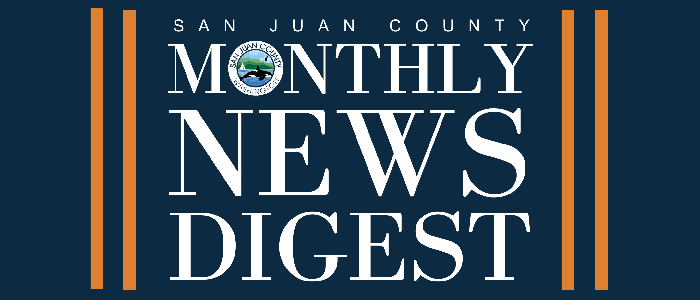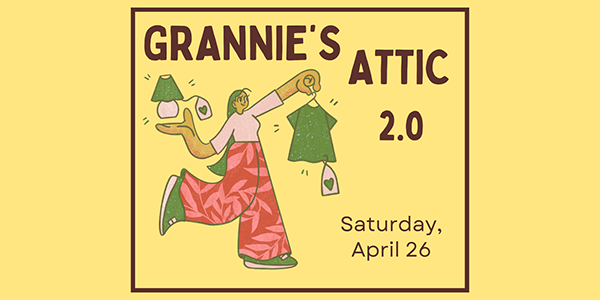–by Matthew Gilbert, Orcas Issues reporter —
While the SJC Planning Commission continues to fine-tune the County’s Vision Statement, another process with significant potential impacts on our collective future took place on May 1 when approximately two dozen people met in the County Council Hearing Room in Friday Harbor to discuss how the state’s Growth Management Act – and other regulatory tools – have been affecting the community’s quality of life and its vision going forward. It was part of a statewide series of workshops called Road Map to Washington’s Future, a two-year project of the William D. Ruckleshaus Center.
The mission of the Center is to “help parties involved in complex public policy challenges . . . develop collaborative, durable, and effective solutions.” It works primarily with policy experts from WSU and UW. The explicit purpose of the Road Map initiative, authorized by the Washington State Legislature, is to “articulate a vision of Washington’s desired future and identify additions, revisions, or clarifications to the state’s growth management framework of laws, institutions, and policies needed to reach that future.”
Invitations were sent to a wide range of local groups and individuals “with a role, interest, or knowledge of” this regulatory framework. The county’s many interests were well-represented as the group was composed of a broad mix of participants including planners, environmentalists, business interests, and others from San Juan, Orcas, and Lopez. Because the workshop was not a public event, none of the quotes or issues raised below will be attributed to specific individuals. The statewide final report will include the names of all participants, although anyone can request that their names not be put on the list.
The state’s Growth Management Act was passed in 1990 (the Shoreline Management Act was added in 1996) primarily in response to a sudden surge of new residents. It focused on redirecting this growth into already dense urban and suburban areas with a mix of carrots (incentives) and sticks (rezoning). How well this worked has been open to debate. San Juan County didn’t adopt the Act until 1998, but it didn’t become officially “GMA-compliant” until 2007 after years of litigation from local residents challenging certain parts of it.
And so the intent of the Road Map workshops is to explore the statewide aftermath in more detail while tying the discussion to future planning. To do so, fourteen questions were developed to help channel and interpret public input.
The first set of questions addressed key events that have historically defined the County archipelago and are shaping its present. The answers spanned decades, even centuries, from indigenous habitation and the 1859 Pig War to the introduction of scheduled ferry service in the 1950s. Several people pointed out that in pre-European times, there were as many people here as there are now but with much less impact. The rise of tourism was central to much of the discussion, along with the advent of the internet and fiber technology and the growing popularity of Seattle.
The next set of questions dealt with quality-of-life issues and what the islands need to “thrive.” It was quickly pointed out that how one defines “quality of life” influences such discussions. “Some people want modern culture and interpretive signs on trails. Others want to live alone in the forest.” Much of the conversation again focused on tourism (now numbering 1M visitors a year) and its seasonal nature while housing issues were also foremost for many. “Does a rural or urban perspective most help affordable housing?” asked a member of the group. “R-40 zoning takes land out of development and maintains island character but can drive prices up elsewhere and limit options.” A few pointed out the negative impacts of part-time residents on available housing and community spirit. “Seven out of ten houses in my neighborhood are part-time rentals,” said a female participant. “I feel like a stranger.” Added another: “People often move here for the beauty, but they stay for the community.”
The tension between urban and rural planning needs was characterized by the fact that it’s easier to get GMA funding for “mainland-type solutions” such as road widening but not for more rural-specific needs.
Given the knowledge base of the group and the amount of “futures planning” that has already taken place in the County, the discussion pivoted to the positive and negative impacts of the current state planning framework, again most notably the GMA. On the plus side, the GMA has provided a “relatively level playing field” rule-wise; identified and protected more resource lands; created more transparent and locally controlled planning processes; and brought a more diverse group of people to the table. The list of negatives – or at least limitations – for San Juan County was quite a bit longer:
- “It relies on a one-size-fits-all approach that favors urban- and suburban-based solutions, not those more appropriate for a rural island community.”
- “It’s not very effective managing pubic and private interests.” (The example given was inconsistent shoreline protection.)
- “The adoption of rules is rewarded but not implementation or enforcement.”
- “Economic and educational issues are not well-addressed.”
- “There needs to be more options and flexibility in the use of subsidies.”
- “It needs to be more scale relevant, for example, small homes (1200 sq. ft.) are treated as having similar impacts as larger homes (3000+ sq. ft.) and required to meet the same onerous regulations.”
- “The Act makes it difficult for County citizens to challenge it. It’s an adversarial process.”
There was also a general sense in the room that the Act itself (its 14 Principles and, by implication, other state laws in the planning framework) was based on the wrong assumptions:
- It assumes growth (sustainable or not).
- It doesn’t address resource consumption issues.
- There is no acknowledgment of the market forces that often trump planning goals and implementation.
Other notable comments included the following:
- “We don’t know our carrying capacity, what the environment can support.”
- “We need a build-out and impact analysis.”
- “It’s not fair to pull up the drawbridge just because we got here first.”
- “We’re becoming a destination for climate refugees (especially wealthy ones) from throughout the country.”
- “We can choose the market path, where you end up paying for what you don’t want, or the planning path, where you end up paying for what you do”
Workshop organizers emphasized that the process was iterative and emergent and that the primary intent was to listen. Students, the tribes, Hispanic populations, and specific workshops for “electeds” will also be part of the process. A final report will be delivered June 2019 and specific community summaries are also being considered.
**If you are reading theOrcasonian for free, thank your fellow islanders. If you would like to support theOrcasonian CLICK HERE to set your modestly-priced, voluntary subscription. Otherwise, no worries; we’re happy to share with you.**








Thanks Matthew. The only modest correction is that SJC adopted the GMA planning process in 1992 and completed the Comp Plan in 1998. The Comp Plan was then immediately, successfully and repeatedly challenged before the Western Washington Growth Management Hearings Board by a small group of locals for being in egregious violation of GMA. The litigation lasted for years; the resulting plan is still inconsistent with the county’s vision statement, stated as “the foundation of the plan”. Without public awareness and conversation, the Vision statement (and what it stands for: the aspirations of those who live here) will remain window dressing. If you like Nantucket and Aspen, say nothing and have a beer. If you like the county the way it is now, and believe the Vision should be realized not just a sop to keep you in the Matrix, drink black coffee (or take the red pill): this isn’t fake news. Read more at KeepSanJuansWild.org
Joe, thanks so much for all you do!
I’m happy that these things are being discussed… again. Let’s hope that this time the discussions have some effect. But let me get it straight because Im confused… So… the only guideline for where to put the UGA was that “it was more densely populated or “suburban” than other places?
Did ANYONE think to consider lay of the land, geology, Indian burial grounds, where the largest contiguous wetlands were, watersheds, nearshore wetlands, how much was forested, creeks, how to deal with stormwater? How would Eastsound Watershed Basin have ever been allowed to be Orcas Island’s UGA if these things had been considered?
EASTSOUND WATERSHED BASIN CHARACTERISTICS:
1 mile wide, at sea level (rising seas). President’s Channel to the north. Fishing Bay to the South, and Crescent Beach Bay. – both a part of Eastsound Bay, a much larger marine ecosystem. A very large peat bog at the north end. The most shoreline per capita AND land mass of anyplace on Orcas island. Nearshore environments to be protected (they weren’t). Eastsound Swale – one the island’s largest category two wetland with a seasonal creek – destroyed by endless loopholes in envionmental protections and lack of enforcement of violations to buffers and setbacks, despite citizens’ requests for code enforcement. Eastsound Creek destroyed. Eastsound Swale forests chopped up piecemeal due to land use loopholes. Now, all surrounding forests chopped down and bulldozed, including mixed forests with madronas, cedars, bigleaf maples.
Eastsound Basin watershed. A bowl between two substantial hills/mountains with tons of runoff and silt erosion due to development there, with little plan or forethought. No plan to stop stormwater from flooding Eastsound Basin from up-slope as THOSE upland forests get destroyed. Suburban “sprawl” because the downtown has become home to Vacation Rentals and shops and real estate offices. Stormwater from all this carnage being piped in to the saltwater ecosystems we should have been protecting. No trees left to filter it. Sewage being piped out into the salltwaters too. The list goes on and on.
Burgeoning homeless populations, drug addiction, mass exoduses of working class families being pushed out (Just like the First Nations people before us.)
Ordinances made behind our backs, without our say. Protecting the moneyed interests of a few, while boot-squashing the working class and the beloved lands we should have protected at all costs; pushing our families and friends off the island.
Noise ordinance = no celebrations, graduation parties, dances, music festivals, birthdays, weddings, funerals, etc at Oddfellows and other downtown venues that provide music and should have been grandfathered-in and protected from this Ordinance. Why did the Landed Gentry move here to our little town in the first place if they can’t stand the noise of life and celebration? Now they all want to come live in Eatsound while a working stiff can’t find a rental that is affordable, even with 2 or 3 jobs, or celebrate after a 60 hour work week.
Peddlers Ordinance = intention to keep hard-scrabbling and resourceful people looking for a way to be here, from making money off their wares, creations, inventions, flowers grown locally, etc.
Streetscape Ordinance = permission to make abominations like the Miller/Campbell development possible, along with the destruction of one of the last and largest forest ecosystems left in Eastsound.
Sign Ordinance = no way to advertise yard sales, studio sales, or dances and other events. No way for restaurants “off the main drag” to let people know they exist. No way to be arty, creative, funky, hand-make your posters or signs, and add to the charm that originally drew people here. Nope. Gotta gentrify it and tell us what color we can paint our houses.
Destruction of the “3 Gates” that were supposed to be protected, along with Eastsound Swale, Eastsound Knoll, Victory Hill, and other places deemed Natural in and around the Eastsound UGA.
Destruction of our boreal forests – forever changing the skyline – in an already huge wind tunnel (1 mile wide, at sea level, blah blah blah) – making damaging and relentless high winds a permanent condition to deal with. And now – blowing dirt and dust (again, no trees to help filter this out) blowing filth around, clogging our window screens and our lungs.
The last forest left from Fishing Bay to North Beach will be destroyed by OPAL for their housing project if they raise their funds, while we name the orchard field next to it (did you know that even centuries-old apple trees CAN be moved with good success rate?) after a COW! And preserved in the cow’s name! Good god! Does anyone else see the painful ironies of all this?
Cutesy “renaming” of every street, driveway, and naming of new roads. There are some real doozies. “Haven” road is but one example of the oxymorons of absurdity, along with that over-kill streetscape proposal for up to 77 houses on the beautiful forested hill down to Madrona Point, full of Indian graves.
Is Orcas becoming a theme park? What shall we name it? Disneyland North? Investment Island? “O” Island (no offense meant to Oprah – I hope she will partake in this community and learn about the many battles we people have been fighting to retain something of the place we have loved for generations.)
I’m tired of being poor. I plan to have a canal gondola-rides business, and crafts booths along the shores of Orcas East and Orcas West when Eastsound is under water. And instead of chasing and harassing vanishing Orca Whales soon to be extinct, perhaps we can have “amphibian watching” tours of the canal (if there are any left.)
Gentrifying this place, this town, and pushing out the working class – pushing them right off the islands. Is that the definition of an “Urban Growth Area?”
Roads built to “State standards” suddenly needing 10 foot shoulders and 5 foot concrete sidewalks with curbs when the original road was less than 30 feet total – and now mandated to be much wider than if we weren’t under the thumb of state regulations and THEIR roadbed and easement specs. Is this what we want? I think we have said a resounding “no” plenty of times. Grant moneys given to “engineer” these roads and to continue to betray what this place is to the people who have to live with this.
People speeding along on roads where speed limits are too high and no enforcement happens. Sad and sickening road kill everywhere, as people speed along to their 3 jobs or “important meetings.” Where is the care and concern for quality of life and other lives than human? Where is the unity between FORCED “urban” folks and rural folks? Are we a house divided by class war?
Did any of this get discussed by those hand-picked individuals? Or the fact that this is a RURAL county and that “Urban” doesn’t even belong in the language describing us? Or the fact that when forced to have these “urban” growth areas, that 54% of the population was supposed to LIVE here (- I assumed year-round. Boy, was I Wrong!) What is being built? Vacation rentals! Do the majority of people know that “long term rental” means 31 days or longer – not year-round or even 6 months?
Water as a finite resource; Carrying capacity – were these two life-changing and game-changing factors, explored in ANY depth?
Ordinance prohibiting long term rental of detached guest houses outside of the UGA – should this be re-thought? Why should Eastsound, or Friday Harbor, or Lopez Village take all the brunt?
But here I am speaking of specifically of Eastsound. Our land mass is much different than either of those two places. (1 mile wide, at sea level, shorelines all around, huge wetland, blah blah blah)
Am I angry and heartbroken over these continuing betrayals of the people? You bet. Is all of this just more pretty talk to cover up the biggest land grab to date? What name shall we call it? When are we going to face the truth and say ENOUGH?
Ahmen. Thank you for your sincere comments, you are not alone.
77 More homes on Madrona Point?!?!? That’s a violation and desecration of the sacred & I Protest. When were all these permits granted & when was the public announcement? Funny how so much awareness now can only be through a rear view mirror — who’s driving this bus? Or should I say train/wreck…
I work in town and see SO much development SO fast — and what Sadie says & sees is true — we’re befouling ourselves and, more importantly, the beautiful precious land which sustains us.
Susan, I misled you. That number – it’s either 70 or 77 is at buildout. 14 more are slated to be built very soon. I think the next part to go will be behind Dr. Russell’s former office, that strip mall driveway that they named Urner Street.
I’m not sure if their “buildout” numbers include MORE subdivision, but they could. I feel sick to my stomach every single day. I weep now every day.
I heard that council approved the 5 foot wide sidewalks with curbs on “Haven” street – effectively destroying every single living tree on that side of the road AND Oddfellows event parking. WHEN has Council EVER sided with the working people and the environment? WHEN?
Matthew, how were you all chosen to represent the County at this Workshop? What Criteria was used for inclusion? Thanks for the information you presented re: what’s going on.
from Margie Doyle, Editor, Orcas Issues responded to an invitation to attend the meeting.